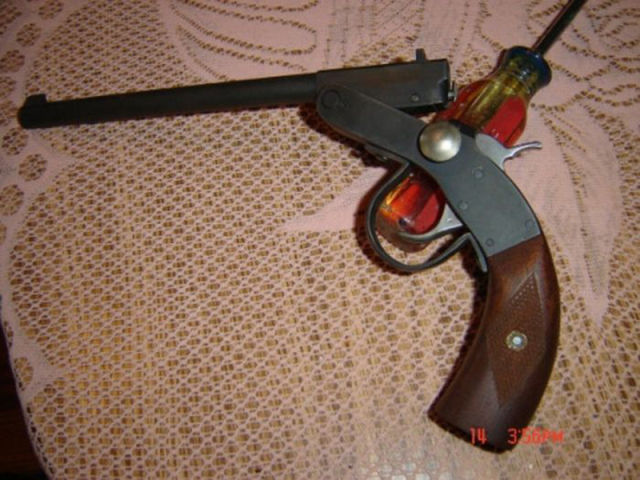ghost
New Member
- Joined
- Dec 16, 2013
- Messages
- 1,234
- Likes
- 2,455


The Duck's Foot Pistol
The duck's foot pistol was named so because its four splayed barrels were shaped like the foot of a duck (back in the 18th century, when ducks were gargantuan, terrifying monster with pistols for toes), it was designed to take on large groups at close range. It was most popular with officers on sailing ships, who often carried a pair of them to, uh, "discourage" potential mutineers in the cramped quarters.The immediately apparent problem here -- that the rational person would've spotted instantly, but the completely insane gun maniac clearly missed because he was too busy firing indiscriminately into crowds -- is that you can never hit what you're actually aiming at with a standard duck's foot pistol. You can only hit everything else around it, because none of the four barrels point straight ahead. But that just means that you have to remember to think a little differently when handling one: Instead of aiming at the thing you want to kill, you just aim at the one thing you like and kill the rest of the world around it.



http://i.crackedcdn.com/phpimages/article/1/3/6/121136.jpg?v=1

Key Guns
it was first in the 16th century, key guns allowed a jailer to keep his weapon throughout the entire extremely vulnerable process of opening a cell door, thus never leaving him unprotected. Well, all except for the times when he's actually using the key/barrel end of the pistol to disengage the lock. hence key guns weren't just shaped like keys to throw people off or disguise their nature as pistols -- they're both functional keys and functional pistols (presumably so that if some uppity lock ever has the balls to stick on your watch, you can just shoot it off like a Renaissance Bruce Willis).




















































